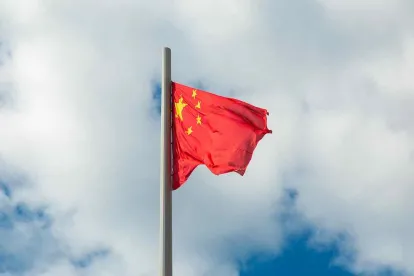Key Takeaways
-
U.S.-person personnel at Chinese chip manufacturers are in a precarious position.
-
New rules limit what activities those persons may undertake with respect to their work.
-
However, there are ways they can nevertheless contribute to their companies, maintain their citizenship status, and comply with applicable U.S. law.
Background
Since October 7, 2022, when the Bureau of Industry and Security (“BIS”) dropped 140 pages of regulations on the semiconductor industry, U.S. passport and green card holders working at Chinese chip companies have been worried. For some of these folks, whether located in the United States or in China, the new regulations seemed to pose a difficult choice:
Your citizenship or your career?
The new regulations, at least initially, appeared to impose such strict controls that almost no U.S. person could effectively work for a Chinese chip manufacturer of a certain level of technological sophistication. Since that time, BIS has issued guidance that may open the path a bit for U.S. persons employed by Chinese companies. However, the road to successfully balancing U.S. citizenship and Chinese employment is still fraught with complexities and risk for many.
U.S.-Person Restrictions
At the time the regulations were issued in October, it appeared that BIS restrictions on U.S.-person activity had reached the levels of U.S. sanctions restrictions and that no one with a U.S. passport or green card could do any work with Chinese companies that produced semiconductors at or above a certain technological level (“Advanced Fabrication Facilities” or “Advanced Fabs”). We wrote:
Ok, so here’s the wild part: the EAR place direct restrictions on U.S. person support for the development of any chips if that support goes to a facility that produces advanced semiconductors (or even if you don’t know whether the facility produces advanced semiconductors!). We note that the new bar for prohibiting the provision of information is so low, it functions almost as an EAR control against the provision of services, which will ring a bell for those familiar with U.S. economic sanctions and embargoes administered by the U.S. Office of Foreign Assets Control.
Effectively, the Regulations provide notice that BIS will consider U.S. persons to be in violation of EAR §744.6 if they provide to China any item not subject to the EAR (see that? There is no floor there. That could be just about any information!) that they know will be used in the development or production of any integrated circuits (Note that one too. The information or items a U.S. person provides may be related to any low-level commercial-off-the-shelf IC) if those ICs will be produced at a semiconductor fabrication “facility” located in the PRC (Check out that defined term, facility. We’ll come back to that one) that fabricates ICs that meet the following criteria:
-
Logic integrated circuits using a non-planar architecture or with a “production” technology node of 16/14 nanometers or less;
-
NOT-AND (NAND) memory integrated circuits with 128 layers or more; or
-
Dynamic random-access memory (DRAM) integrated circuits using a “production” technology node of 18 nanometer half-pitch or less.
Note that, to be prohibited, the information and items provided by the U.S. person need not be used in the production of those advanced ICs. Rather, the information or items are prohibited merely if they are to be used in production at a facility that also produces the defined advanced ICs.
U.S. Person Uncertainty and Concern
In effect, it initially appeared that a U.S. person could not provide any information to a Chinese company if that information would be used at an Advanced Fab.
But what if a U.S. person worked for that Chinese company with Advanced Fabs? What if the Chinese company only has Advanced Fabs? What if the U.S. person was the owner, director, or executive of such a Chinese company?
Stories circulated in the industry of tech executives who had studied and obtained citizenship in the United States, who had founded or rose high in Chinese tech companies, and who were now considering whether they needed to uproot their lives and their families in order to save their businesses, or vice versa.
Clarification for U.S. Persons
On October 28, BIS issued FAQs clarifying the restrictions on U.S.-person activity. In those FAQs, regulators appeared to step back from the most restrictive (though pretty natural) readings of the regulations.[1]
Most importantly, BIS clearly stated that the U.S.-person restrictions “do not extend” to:
-
U.S. persons conducting administrative or clerical activities;
-
Implementing a decision to approve a restricted shipment, transmittal, or in-country transfer; or
-
“Development” or “production” activities that are not directly related to the provision of specific items to or servicing of specific items for advanced PRC fabs (that is, developing or producing chips that meet the Advanced Fab criteria above), absent evidence of knowledge of a violation by those persons.
That clarification, by itself, allows for quite a bit of activity by a U.S. person working for a Chinese semiconductor company, so long as the work is not directly related to the technological level of chips that indicate an Advanced Fab.
Additionally, BIS informed us that a “facility” only means a “building.” That means that even where a company has Advanced Fab capacity at a location, the entire campus is not tainted under the prohibition. Only the “facility” or “building” housing the advanced chip manufacturing would be subject to the prohibitions (though if that building housed both advanced and lower-level chip manufacturing, the prohibition would apply to both production lines).
This narrowing of the prohibition gave more room for U.S. persons to maneuver. They could engage in lawful activity, providing information (authorized where appropriate) to China where that information would be used in a different building from an Advanced Fab production. It is easy to imagine that product lines are being segregated to leverage this point and reduce the scope of the prohibited facilities. One pictures a number of [peers over glasses] Chinese walls being built.
All of this apparent reduction of the U.S. person prohibitions’ scope and potency followed three weeks of worry across the industry. As two of our esteemed colleagues wrote at the time, “this would have been a nice thing to know on October 7”![2] However, even under the clarifying FAQs, there is still a narrow path for U.S. persons working with Chinese chip companies to follow.
U.S. Persons Maintaining the Balance
There are a lot of ins-and-outs to managing compliance with the October Regulations, particularly for U.S. persons working for Chinese companies. There is no way we could capture all the nuance in a single article (or even in a single cool chart, like the one below). So we must add the caveat that this is not legal advice and that every fact pattern should be analyzed individually. However, we provide a rough guidance below (click through to see the full two pages) that may help assess decisions with respect to U.S. person activity.
We will continue to monitor the U.S. regulations and their impacts across the semiconductor industry. And, of course, we will provide our updates (hopefully more timely in future) here.
FOOTNOTES
[1] Perhaps the broad reading skirted too close to in personam jurisdiction (a control of U.S. persons) where most BIS regulations are based on in rem jurisdiction (“as against the thing,” you will all recall, without having to look it up like some of us did).
[2] Shoutout to Kay Georgi and Marwa Hassoun! Great article! (https://www.afslaw.com/perspectives/national-security-counsel/just-the-facts-6-takeaways-biss-semiconductor-faqs)





 />i
/>i

